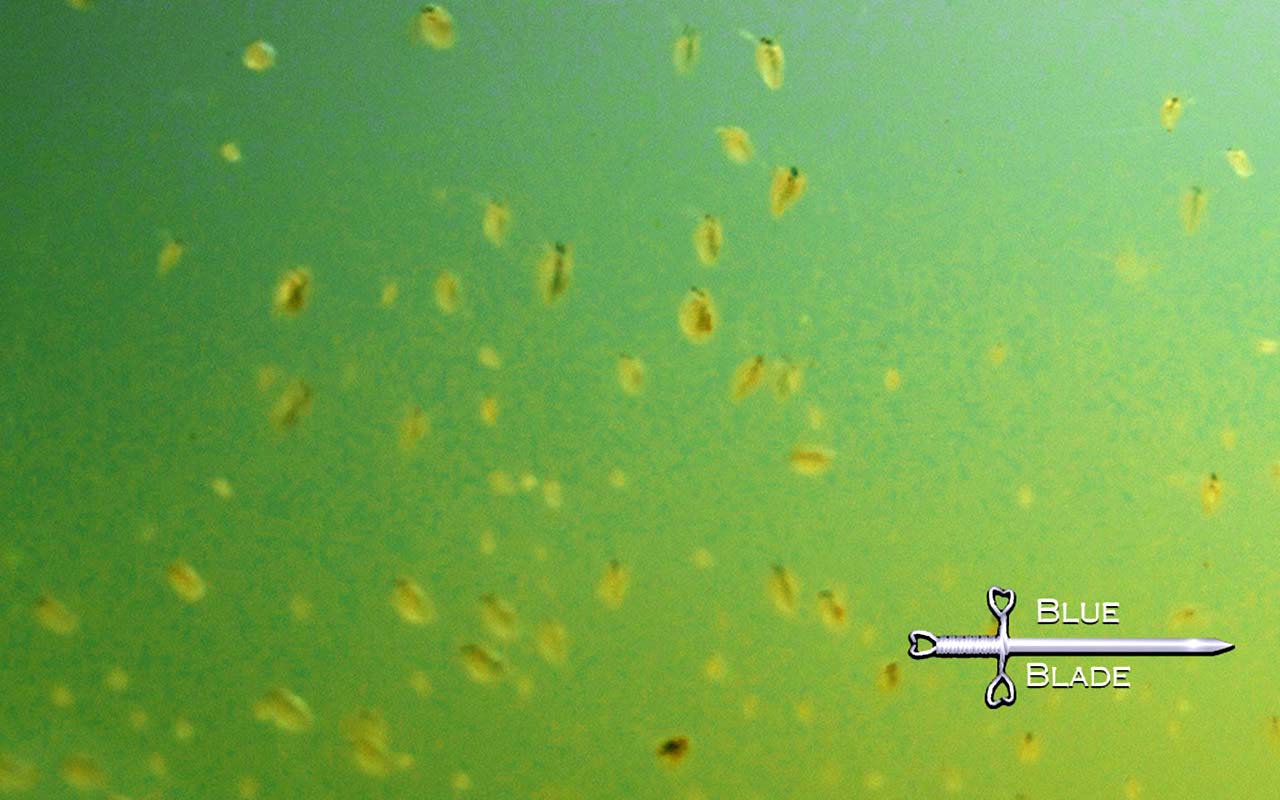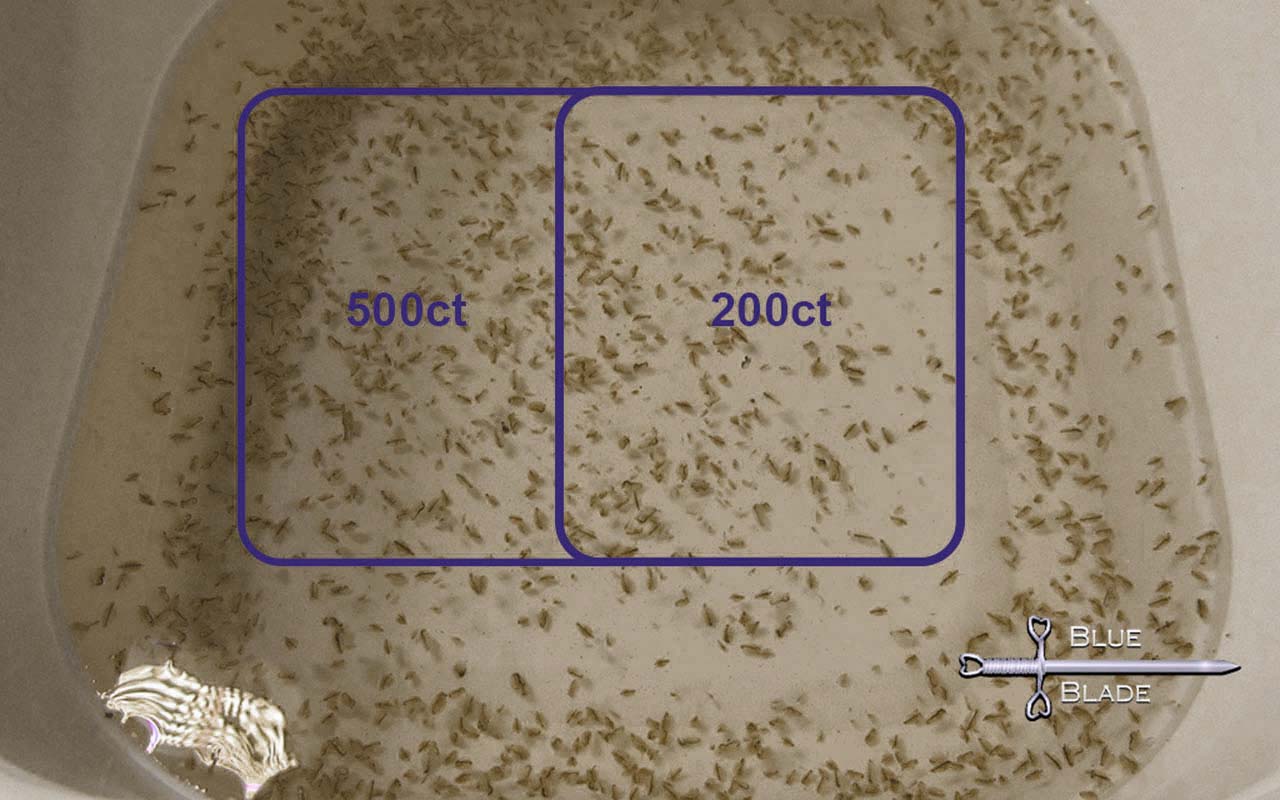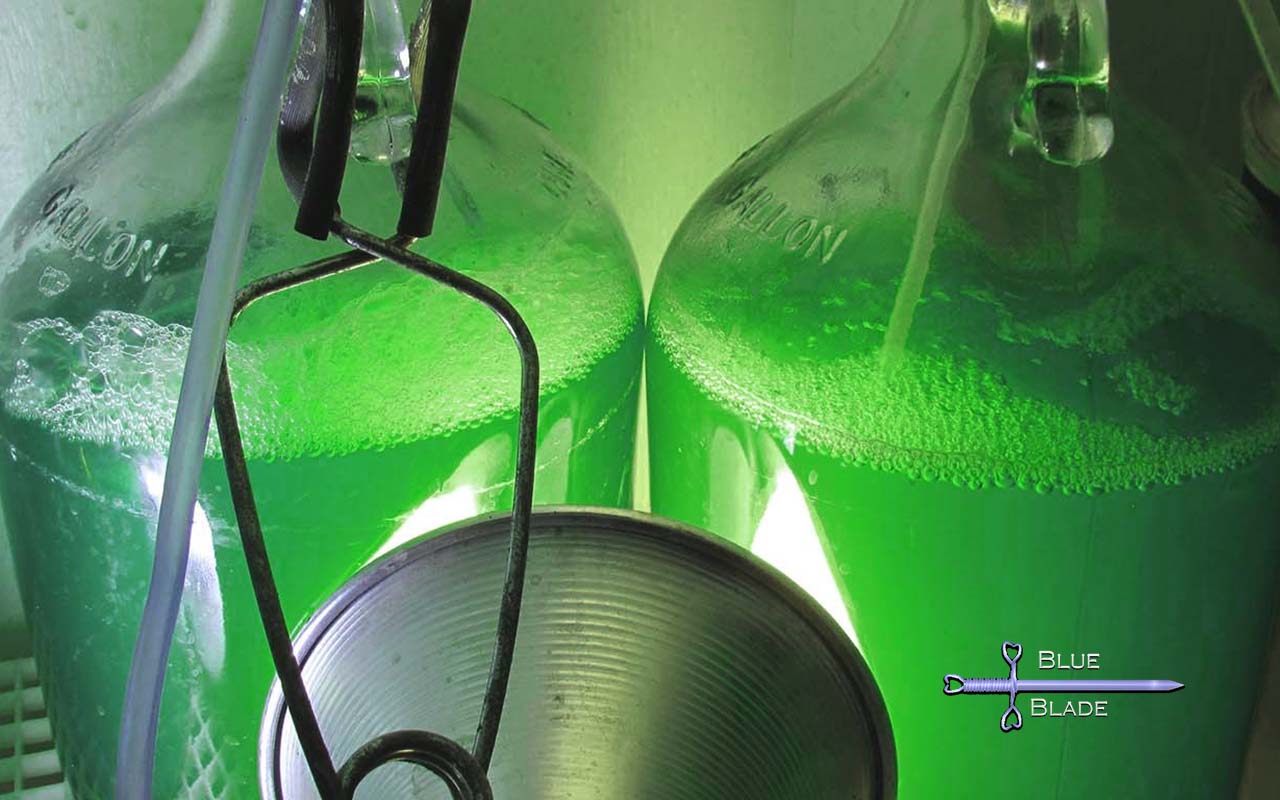
Materials:
1) Culture vessel (tank, jar, tub)
2) Clean water
3) Light (electric or sunlight)
4) Food or greenwater
5) Air Pump and tubing
6) Starter culture
Daphnia are an excellent food for fish. They help in inducing spawning in adults and for feeding picky eaters. The smaller/younger daphnia can be screened out used to feed fry. They can live indefinitely in you fish tank until eaten, allowing you to feed large amounts without fear of fouling the water.
Maintaining a Daphnia culture is a bit easier than maintaining a basic aquarium of the same size. No filtration is needed, just some bubbles to stir the water. They thrive at any temperature a person would find remotely comfortable, and survive near freezing, so no heater is needed. They do need to be fed regularly, and the water should be changed every few weeks. Larger outdoor cultures may be able to skip even those efforts.
You can start a culture from resting (daphnia) eggs, or live daphnia. It only takes a few, but the more you start with the sooner you will be able to harvest some for feeding. You can buy bottles of starter cultures of live Daphnia taken from our mother cultures for sale here.

Once you have your starter, it's time to grow and propagate.
There are 3 main aspects to culturing Daphnia:
1) Water
2) Circulation
3) Food
Water
Almost any size container can be used to hold the water daphnia will grow in. Larger water volumes allow for larger cultures. I recommend at least a 1-gallon jar in a sunny window. 10-gallon tanks or 5-to-30-gallon plastic bins also make excellent culture vessels.
Daphnia are sensitive to chlorine, heavy metals, and medications/poisons. Otherwise, they are very hardy - able to survive and often thrive in temperature, PH, hardness, and oxygen levels that would be bad for most fish. Therefore, aged fish tank water (without medications) is ideal for them. Rainwater can be even better. Tap water can be used if well dechlorinated, but it may be better to aerate it for a day or two before using to be certain. Daphnia are much more sensitive to chlorine than fish.
Daphnia can survive very "dirty" water; however, it is wise to do 50% water changes every few weeks to prevent culture crashes. Some triggers cause the heathy all female culture to begin producing males. The culture then produces "resting eggs", and the population starts to drop rapidly. Not all is lost, as the resting eggs can be dried and used to start new cultures weeks or months later. One of the suspected triggers for this "crash" is high phosphate levels. The theory is that If phosphate levels are rising, then algae must not be growing and taking it up, which may indicate to the daphnia that famine is imminent, and they should switch to sexual production of haploid resting eggs rather than growing the population. Weather that is the reason or not, careful water changes help keep indoor cultures stable. For larger outdoor cultures that receive ample sunlight (and likewise algae growth) I have not found water changes to be needed.
Circulation:
daphnia can survive in stagnant water with low oxygen levels, but to really thrive they prefer a slow flow. The ideal amount of flow is just enough to keep powdered foods and algae suspended in the water and slightly agitating the surface to increase oxygen, but not violent enough to fling the daphnia out or against the sides.
Fine air stones are often not recommended for fear that the small bubbles may trap daphnia at the surface. I have not had this issue, but I do not think they provide any benefit. It is enough to simply tie the airline to a rock and sink the end to the bottom. The larger bubbles provide a more turbulent flow. The aeration and surface agitation has the added benefit of preventing mosquito larva from taking hold.

Food:
To grow the culture, it must be well fed. The best food is greenwater. For small cultures it is possible to feed greenwater exclusively. However, it can be prohibitively difficult to culture enough greenwater to feed larger cultures. Dried algae power, such as spirulina or chlorella make excellent foods. yeast is very commonly used also. A mix of those three has been found to be best, though most vegetable powders will work. Powdered pea soup, if it can be found, was used for decades.
Whatever food you use, you want to keep the daphnia constantly fed - without polluting the water too badly. The general rule of thumb is to feed just enough that the water is mostly clear the next day, and fully clears the day after that. Feed again as soon as the water clears, adjusting the amount fed as the culture grows.
Culture Process:
On Day 1 of a new culture: place your container in a well-lit or sunny location, add clean chlorine-free water, set up an air pump and drop in an airline weighted so that the end sits near the bottom, and adjust the airflow. Float the starter culture for a few minutes to temperature acclimate it, and then add the daphnia. add a small amount of food - just enough to slightly tint the water.
First week: Check the culture daily to see if the water has cleared. Feed when it is clear. Adjust the amount fed so that feeding is only needed every other day.
continue feeding every other day
Week 2 and every 2 weeks: perform a 50% water change. Strain the water removed trough a fine fish net to capture any daphnia. These may be fed to your fish or returned to the culture.
Weekly: once the culture reaches a density of about 20 per Oz, or 40 in a shot glass worth of water, you should begin harvesting. You should harvest at least once per week, weather you need them or not. The harvested daphnia can be frozen and fed later if need be. You can harvest up to half of the population. Smaller amounts may be taken more frequently. You must collect enough to keep the population from becoming too dense. Overpopulation can trigger a culture crash. The easiest way to harvest is to simply scoop out a portion with a small fish net. A fine net (like used for baby brine shrimp) will capture all ages and sizes of daphnia, which may be good if there are fry to be fed. Alternatively a course net will only capture the larger adults.
Notes:
- Light with a day/night cycle appears to be important. Sunlight is best, but any bright light seems to work well. They don't grow well in a dark closet.
- Its always best to have more than one culture. You only need a few living daphnia to get a new culture started, so the second culture can be small and basic - a vase on the windowsill. It isn't unusual for a daphnia culture to suddenly and mysteriously crash, even after years of production. So have a backup.
- If your culture does crash, save the sludge from the bottom of the container - it may have resting eggs. Let it air dry for a while, and it may work for starting again.
- Daphnia can be an effective way to clear up an aquarium with green water - if the fish don't eat them first.
To get your own starter cultures check out the Links under "Buy Here"
Or contact us to see if more is available or for info on any project or culture. Please email us at contact@bluebladefish.com